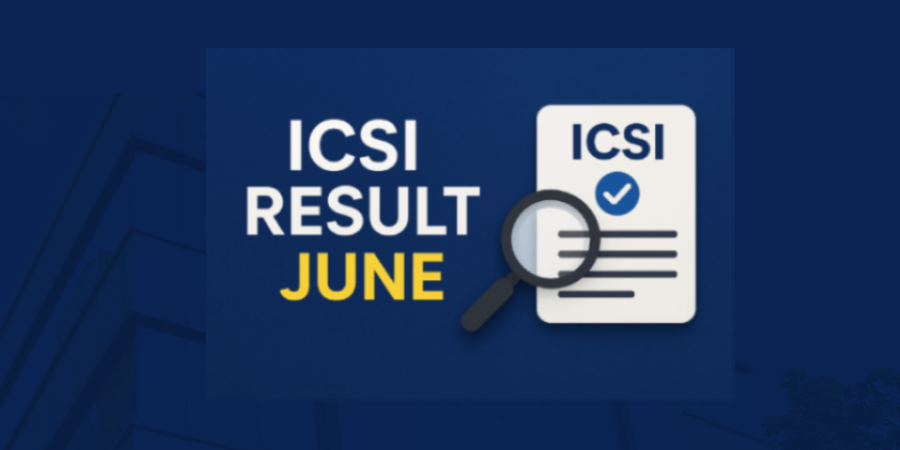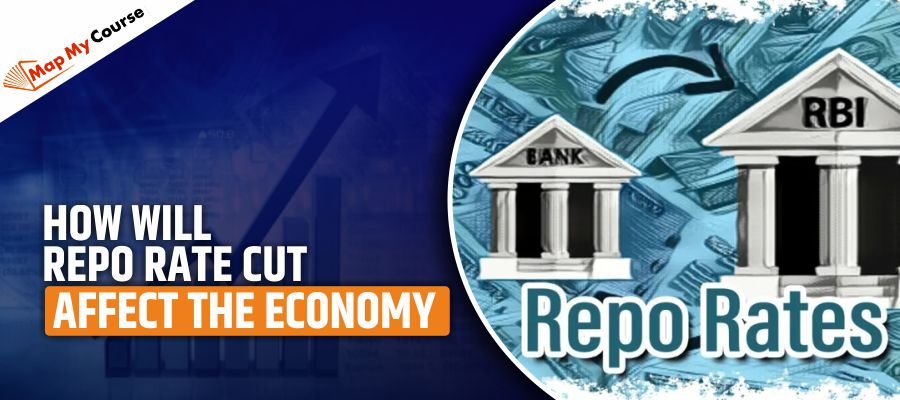You might have heard the term repo rate on the news or in newspapers, especially when the Reserve Bank of India (RBI) makes announcements. But what does it mean? And why does everyone talk about it so much? And how will repo rate cut affect the economy?
The repo rate is an important part of how our country’s economy works. It affects how much interest you pay on the loans, how expensive things become, and even how businesses grow. So yes, even if it sounds like a boring financial term, it impacts your daily life more than you can think!
In this blog, we’ll explain everything in simple words—what the repo rate is, how it works, what a repo rate cut means, and how it affects the Indian economy. As, this will help you understand how money moves in our system and why it’s important to keep an eye on what the RBI is doing.
What Is Repo Rate And How Does It Work?
The repo rate is the interest rate at which the Reserve Bank of India (RBI) lends money to commercial banks like SBI, HDFC, ICICI, etc. when they need short-term funds.
Banks need to borrow money because sometimes, they may not have enough cash to give loans or handle daily operations. So, they go to the RBI and borrow money for a short period. But just like any other loan, they have to pay interest on this money.
Here’s how it works:
- If the repo rate is high, it’s expensive for banks to borrow money from the RBI. This means banks may charge higher interest on loans to customers.
- If the repo rate is low, it’s cheaper for banks to borrow money from the RBI, making it easier for people to borrow money.
What Is a Repo Rate Cut?
A repo rate cut means the RBI lowers the lending interest rate to banks. Banks can borrow money at cheaper interest rates from the RBI when this happens. The RBI cuts the repo rate to make borrowing money easier for people and businesses. Lower rates mean banks can offer customers loans at cheaper interest rates, whether for a home loan, a car loan, or even an education loan. This helps boost spending, which is good for the economy.
What Is The Current Repo Rate In India 2025?
As of April 2025, the Reserve Bank of India (RBI) has reduced the repo rate by 25 basis points, bringing it down to 6.00%. This decision was made during the 54th meeting of the Monetary Policy Committee (MPC), which took place from April 7 to 9, 2025.
The RBI’s decision to cut the repo rate shows that it wants to help the economy grow. With inflation coming under control and global trade facing challenges, the RBI hopes that making loans cheaper will encourage businesses to borrow, invest, and grow
Why Does the RBI Cut the Repo Rate?
- To Encourage Borrowing and Spending
When loans become cheaper, people are more likely to take home loans, car loans, education loans, or even business loans. Similarly, companies can borrow more easily to expand their business. This increases spending in the economy, which helps boost growth.
- To Support Economic Growth
If the economy is slowing down or facing challenges (like low demand, job losses, or weak investments), a repo rate cut can help give it a push. Lower interest rates make it easier for businesses to grow and for people to spend money, which supports overall economic development.
- To Create More Jobs
When businesses get cheaper loans, they may invest more in new projects, factories, or services. This can lead to more job opportunities, especially in sectors like real estate, manufacturing, and small businesses.
- To Increase Liquidity in the Market
Liquidity simply means how much money is flowing in the economy. A repo rate cut helps increase liquidity, making it easier for banks to lend money and for people to access credit.
- To Handle Global or Domestic Challenges
Sometimes, the RBI cuts the repo rate to deal with situations like a global slowdown, falling exports, or weak investment trends. In such times, reducing interest rates can help make the economy more stable and active.
What is Basis Point (BPS)?
A Basis Point (BPS) is a unit of measurement used in finance to describe small changes in percentages, particularly when discussing interest rates, stock prices, or yields. One basis point equals 0.01% (one-hundredth of a percent). For example, if an interest rate increases from 5.00% to 5.01%, it has risen by 1 basis point. Basis points are commonly used to make discussions about financial changes clearer and more precise, especially when the changes are small, ensuring there’s no confusion in interpreting the percentage change.
Immediate Economic Impacts of a Repo Rate Cut
- Loans Become Cheaper
A repo rate cut makes it cheaper for banks to borrow money from the RBI. As a result, banks usually reduce the interest rates on home loans, car loans, personal loans, and more. This means your monthly EMIs become lower, making it easier to repay your loan.
- People Spend More
Since loans become more affordable, more people borrow money to buy things like houses, cars, or gadgets. This leads to higher spending, which helps businesses grow and boosts the overall economy.
- Real Estate Market Gets a Push
Lower interest rates make home loans cheaper. Because of this, more people think about buying property. This increases activity in the real estate sector, helping builders, property agents, and construction workers.
- The Stock Market May Go Up
When borrowing becomes cheaper, businesses can invest more in growth. Investors see this as a good sign. So, the stock market often goes up after a repo rate cut, as people expect better performance from companies.
- Savings Earn Less Interest
While borrowers benefit from lower interest rates, savers may earn less. Banks often reduce interest rates on fixed deposits and savings accounts after a repo rate cut. So, if you have money in the bank, your returns may be lower than before.
- Risk of Rising Prices (Inflation)
A repo rate cut encourages more spending. If people start spending too much, it can lead to higher prices for goods and services. This is called inflation. The RBI needs to balance rate cuts carefully to avoid a sudden rise in inflation.
Impact on Different Economic Sectors
- Banking Sector
Banks are directly impacted when the repo rate is cut. Since borrowing money from the RBI becomes cheaper, banks can offer loans to people and businesses at lower interest rates. This encourages more people to take loans. However, banks might also lower the interest they give on savings and fixed deposits.
- Real Estate Sector
When loan interest rates go down, home loans become cheaper. This encourages people to buy houses or invest in property. As more people buy homes, related sectors like construction, cement, and interior design also grow.
- Automobile Sector
Car and bike loans become more affordable after a repo rate cut. This helps increase the sale of vehicles. People who were waiting for better loan offers often take advantage of this and make their purchases.
- Education Sector
A lower repo rate usually brings down the interest on education loans. This is helpful for students who want to pursue higher studies, either in India or abroad. It also helps families manage education costs more easily.
- Stock Market
The stock market often reacts positively to a repo rate cut. When companies get loans at lower interest rates, they can grow faster. Investors feel more confident, and this can lead to a rise in stock prices.
- Retail and Consumer Goods
When people pay less on their EMIs, they have more money to spend. This leads to higher demand for clothes, electronics, groceries, and other household items. Retail shops and FMCG (Fast-Moving Consumer Goods) companies usually benefit.
- MSMEs and Small Businesses
Small businesses often need loans for daily operations or expansion. A lower interest rate makes it easier for them to get loans. This helps businesses grow and also creates more job opportunities.
- Tourism and Hospitality
When people have more money to spend, they often plan holidays or outings. This helps hotels, airlines, restaurants, and travel companies. The tourism and hospitality sector usually sees more business during such times.
- Infrastructure Sector
Big projects like roads, railways, airports, and bridges need large amounts of money. With lower interest rates, the government and companies can borrow more easily to fund these projects. This also creates more jobs in construction and related fields.
- Consumer Durables
Products like TVs, refrigerators, washing machines, and smartphones are often bought on EMIs. Lower interest rates make these EMIs cheaper. As a result, more people buy these products, helping the sector grow.
Check Out Related Blogs
Conclusion
To conclude, when the RBI cuts the repo rate, it helps the economy by making borrowing money cheaper. This encourages people and businesses to take loans, spend more, and invest in new projects. As a result, sectors like banking, real estate, and retail see growth, and jobs are created.
However, the RBI has to be careful with how much it cuts the rate. If the rate is cut too much, it could lead to inflation, meaning prices of things could go up. So, the RBI needs to find the right balance.
In the end, the goal of cutting the repo rate is to support a strong and growing economy that benefits everyone, helping businesses thrive and making life more affordable for people.
Frequently Asked Questions
Q1: What is the repo rate?
Ans: The repo rate is the interest rate at which the Reserve Bank of India (RBI) lends money to commercial banks for short-term loans. It is an important tool used by the RBI to control the flow of money in the economy, manage inflation, and support economic growth.
Q2: Why does the RBI cut the repo rate?
Ans:The RBI cuts the repo rate to make borrowing cheaper. This encourages people and businesses to take loans and spend more, which helps the economy grow.
Q3: How does a repo rate cut affect me?
Ans: When the repo rate is cut, banks offer loans at lower interest rates. This means you may pay less on loans like home loans or car loans.
Q4: Can a repo rate cut cause inflation?
Ans:Yes, if the repo rate is cut too much, it can cause inflation, meaning prices of things might go up. The RBI has to be careful about how much it cuts the rate.
Q5: Does the repo rate affect the stock market?
Ans:Yes, the repo rate can impact the stock market. When the RBI cuts the repo rate, it lowers borrowing costs for businesses, which can lead to better company performance and higher stock prices.

















